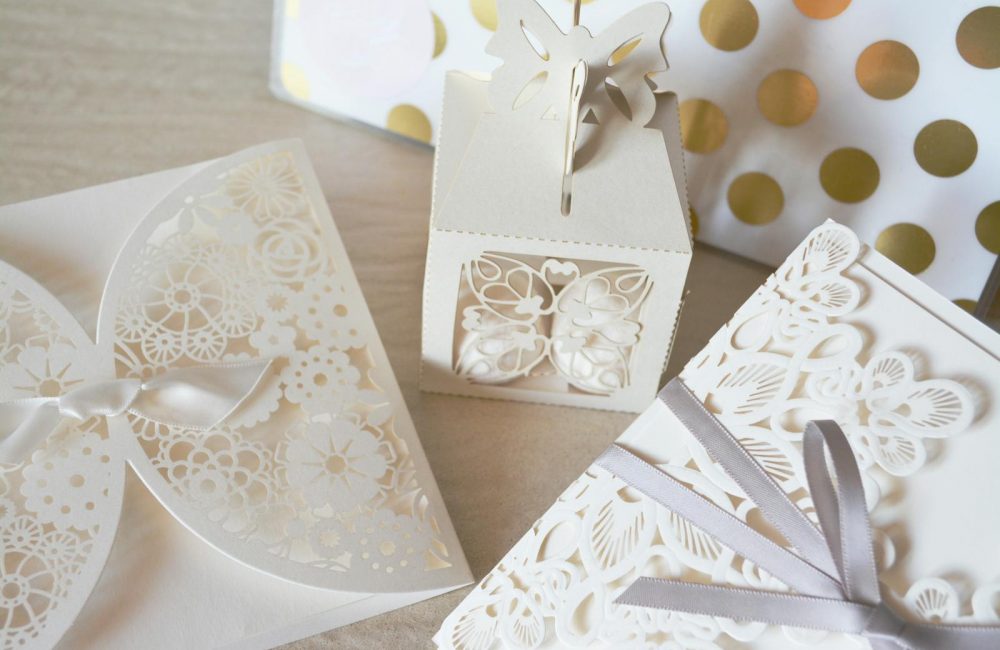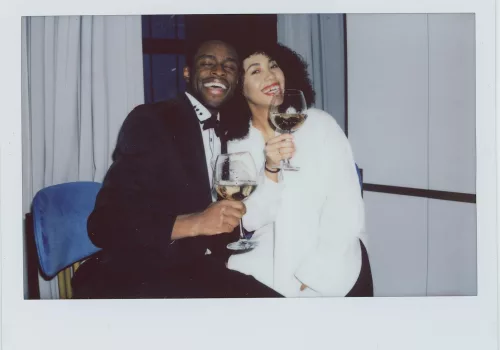Properly addressing wedding invitations is like setting the first brushstroke of a beautiful painting—it sets the tone and expectations for the day. While it might seem like a small detail, the way you address your invitations communicates the formality and significance of your event, and even your relationship with each guest. With some careful planning and attention to etiquette, you can make sure your invitations are a delightful prelude to your special day. Knowing how to address invitations can sometimes feel like navigating a maze of etiquette rules. You want to show respect and consideration for your guests by using the correct titles and formats. Whether you’re inviting married couples, unmarried partners, families, or individuals with professional titles, each requires a slightly different approach. Let’s dive into the specifics of addressing various types of invitations, along with some tips and tricks to make the process easier.
Understanding Traditional vs. Modern Etiquette
Etiquette isn’t just about rules; it’s about respect and understanding. While traditional formats like “Mr. and Mrs. John Smith” are still very much in use, modern couples often prefer variations that reflect more equality, such as “Mr. John Smith and Mrs. Jane Smith.” Here’s a more in-depth look at different scenarios:
Different Formats for Married Couples
While “Mr. and Mrs.” might seem old-fashioned to some, it can also convey a classic elegance. Yet, many couples appreciate when both names are acknowledged, which can feel more inclusive. For instance, if you know both individuals well, using “Mr. John Smith and Mrs. Jane Smith” can be a warm gesture.
- Classic Approach: Mr. and Mrs. John Smith
- Modern Approach: Mr. John Smith and Mrs. Jane Smith
Asking Couples for Their Preference
A simple way to ensure you’re respecting your guests’ preferences is to ask them directly. A quick email or phone call can clarify whether they prefer a traditional or modern address format. This step also shows your attention to detail and consideration for their preferences.
Addressing Invitations to Families
When inviting families, it’s crucial to know not only the parents’ names but also how to properly include the children’s names. This ensures that the invitation is clear and inclusive.
Including Children on Invitations
When children are invited, list their names under the parents’ names. This approach makes it clear who is included in the invitation. For instance:
Mr. and Mrs. John Smith
Emily, Andrew, and SarahThis format avoids misunderstandings about who is invited. If children are not invited, simply omit their names. This subtle exclusion signals that the event is adults-only.
Adult Children Living at Home
For adult children who live at home, it’s appropriate to send them a separate invitation. This recognizes their independent status and acknowledges that they may have their own guest to bring.
Handling Professional Titles
Titles such as Doctor, Reverend, or Judge require special attention. It’s courteous to use these titles as they recognize the individual’s accomplishments and roles in their professional life.
Examples of Professional Titles
- Doctors: “Dr. and Mrs. John Smith” or “Dr. Jane Doe and Mr. John Smith.”
- Military Personnel: “Captain and Mrs. John Smith” or “Major Jane Doe and Mr. John Smith.”
These titles can vary based on personal preference, so if in doubt, don’t hesitate to ask.
Addressing Invitations to Same-Sex Couples
The etiquette for same-sex couples is just as important and requires the same level of consideration. Typically, names are listed alphabetically, unless you know that the couple prefers a different order.
Examples for Same-Sex Couples
- Ms. Jane Brown
Ms. Alice Green
This format shows equality and respect for both individuals in the couple. As with all guests, feel free to reach out for their preferred name and title format.
The Importance of Clear RSVP Details
The RSVP process is crucial for planning your wedding logistics. From catering to seating, knowing exactly who’s coming makes a world of difference. Let’s look at how to ensure your RSVP requests are clear and effective.
Designing RSVP Cards
Your RSVP card should be as straightforward as possible. Include a pre-addressed, pre-stamped envelope to make it easy for guests to reply. Set a clear deadline, typically three to four weeks before the wedding date, to give yourself enough time to finalize arrangements.
Options for RSVP
Offer multiple ways for guests to RSVP. While traditional mail is classic, consider including an email or phone option for convenience. This flexibility can increase response rates, especially among tech-savvy guests or those living abroad.
Personalizing Invitations with Calligraphy
There’s something undeniably charming about a beautifully calligraphed envelope. It adds an intimate, personal touch that printed addresses simply can’t match.
Hiring a Professional Calligrapher
If your budget allows, hiring a professional can ensure each invitation looks perfect. A calligrapher will have the skill to match the style of your wedding and add a touch of elegance that guests will notice.
Practicing DIY Calligraphy
If you’re up for a creative challenge, try your hand at calligraphy. Start by practicing on scrap paper and invest in a quality pen. Many online resources, including video tutorials, can guide you through the basics. This DIY approach allows you to add a deeply personal touch to each invitation.
Ensuring Accuracy with Double-Checking
Before you send out those envelopes, a thorough check of each address is a must. This step minimizes the chance of invitations being returned or misdelivered.
Steps for Double-Checking
- Verify Spelling: Check each name and address for spelling errors.
- Confirm Titles: Ensure all titles are correct and appropriate.
- Current Addresses: Make sure you have the most up-to-date address for each guest.
Taking the time to double-check these details reflects your care and attention to your guests, preventing potential mishaps.
Avoiding Common Mistakes
Even with the best intentions, mistakes can happen. Here’s how to avoid some common pitfalls:
Mistake: Incorrect Titles or Names
An incorrect title or misspelled name can unintentionally offend. Double-check your guest list and, if possible, have a second set of eyes review it as well.
Mistake: Missing Return Address
Always include a return address. This not only looks professional but also ensures that any undelivered invitations make their way back to you, allowing you to correct and resend.
Advanced Considerations for Special Situations
Every wedding is unique, and sometimes special circumstances require a bit more planning.
Destination Weddings
For destination weddings, send invitations three months in advance. This gives guests time to plan their travel and accommodations, especially if they’ll need to take time off work or book flights.
Handling Changes Gracefully
Life is unpredictable, and sometimes guest lists change at the last minute. Maintain a few extra invitations for unexpected changes, and keep communication lines open with your guests.
Putting Thought Into Every Detail
Addressing your wedding invitations with care is more than just a task on your to-do list—it’s an opportunity to express your appreciation for each guest. By considering the nuances of etiquette and the individual preferences of your guests, you create a warm, welcoming tone for your wedding.
Whether you opt for time-honored traditions or embrace modern styles, the key is to ensure that your guests feel valued and recognized from the moment they receive their invitation. As you embark on this journey, remember that the thoughtfulness you put into your invitations sets the stage for a beautiful and memorable celebration.
Crafting Invitations That Reflect Your Wedding Theme
One often overlooked aspect of addressing wedding invitations is ensuring that they reflect the overall theme or tone of your wedding. Whether you’re planning a formal black-tie event or a casual beach wedding, your invitations can set the stage.
Matching Formality with Tone
- Formal Weddings: Use traditional addressing formats and elegant stationery. Consider embossed or letterpress techniques for a luxurious touch.
- Casual Weddings: Feel free to use first names or more relaxed wording. Fun fonts and colorful paper can convey a more laid-back vibe.
Incorporating Wedding Colors
Use your wedding colors subtly in the addressing process. This could be through the ink color used for calligraphy or the envelope liner. These small details tie everything together and give guests a hint of what to expect.
Navigating Cultural Etiquette
Weddings often bring together diverse groups of people, and it’s important to consider cultural nuances in addressing invitations. Understanding cultural norms can prevent misunderstandings and show respect for your guests’ backgrounds.
Examples of Cultural Considerations
- Asian Cultures: In some Asian cultures, it’s customary to address the senior family member first.
- Latin Cultures: Double last names may be used, and it’s important to include both.
- Middle Eastern Cultures: Titles and honorifics can be very important, and consulting with someone familiar with the culture can be helpful.
Technology and Modern Invitations
In our digital age, some couples choose to use technology to aid in the invitation process, which can be both efficient and eco-friendly.
Digital Invitations
E-invites are gaining popularity, especially for smaller or more casual weddings. They can be customized to reflect your wedding theme and allow for easy RSVP tracking.
- Pros: Cost-effective, environmentally friendly, and instant delivery.
- Cons: May not convey the same level of formality as printed invitations.
Online RSVP Systems
Even with traditional paper invitations, you might choose to use an online RSVP service. This can simplify the process of tracking responses and is particularly useful for large guest lists.
Enhancing Guest Experience Through Invitations
Your invitation is the first glimpse your guests will have of your wedding, and it can enhance their experience by providing more than just the basics.
Including an Itinerary
For destination weddings or multi-day events, including an itinerary with your invitation can be helpful. This ensures guests know what to expect and can plan accordingly.
Adding Personal Touches
Consider adding a personal note or a fun element related to your relationship. This could be a short story about how you met or a favorite recipe you’d like to share.
Reflecting on Common Challenges
Despite your best efforts, some challenges may arise in the process of addressing wedding invitations. Here’s how to handle them gracefully.
Last-Minute Additions
Always order extra invitations to accommodate last-minute changes or oversights. This foresight can save stress as the wedding date approaches.
Handling Declines
If you receive declines from some guests, avoid the temptation to fill their spots with others not originally invited. This can lead to feelings of being a “second choice.”
Final Thoughts on Addressing Wedding Invitations
Addressing wedding invitations is a blend of art and etiquette. It’s about conveying the right tone, respecting traditions and preferences, and adding personal touches that make your guests feel special.
This process is an opportunity to reflect the love and thoughtfulness you are putting into your wedding day. By paying attention to these details, you’re not just sending an invitation—you’re offering a heartfelt welcome to one of the most important days of your life.
So, as you pen those envelopes or type those email addresses, remember: each one is a connection to a cherished guest, a part of the tapestry of your celebration. May these invitations open the door to a joyful, memorable wedding day for you and your loved ones.






